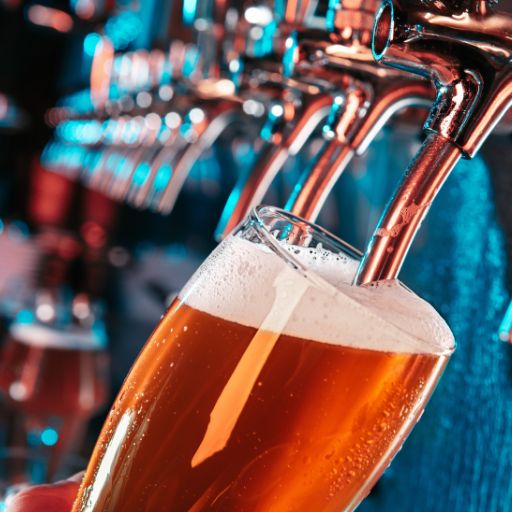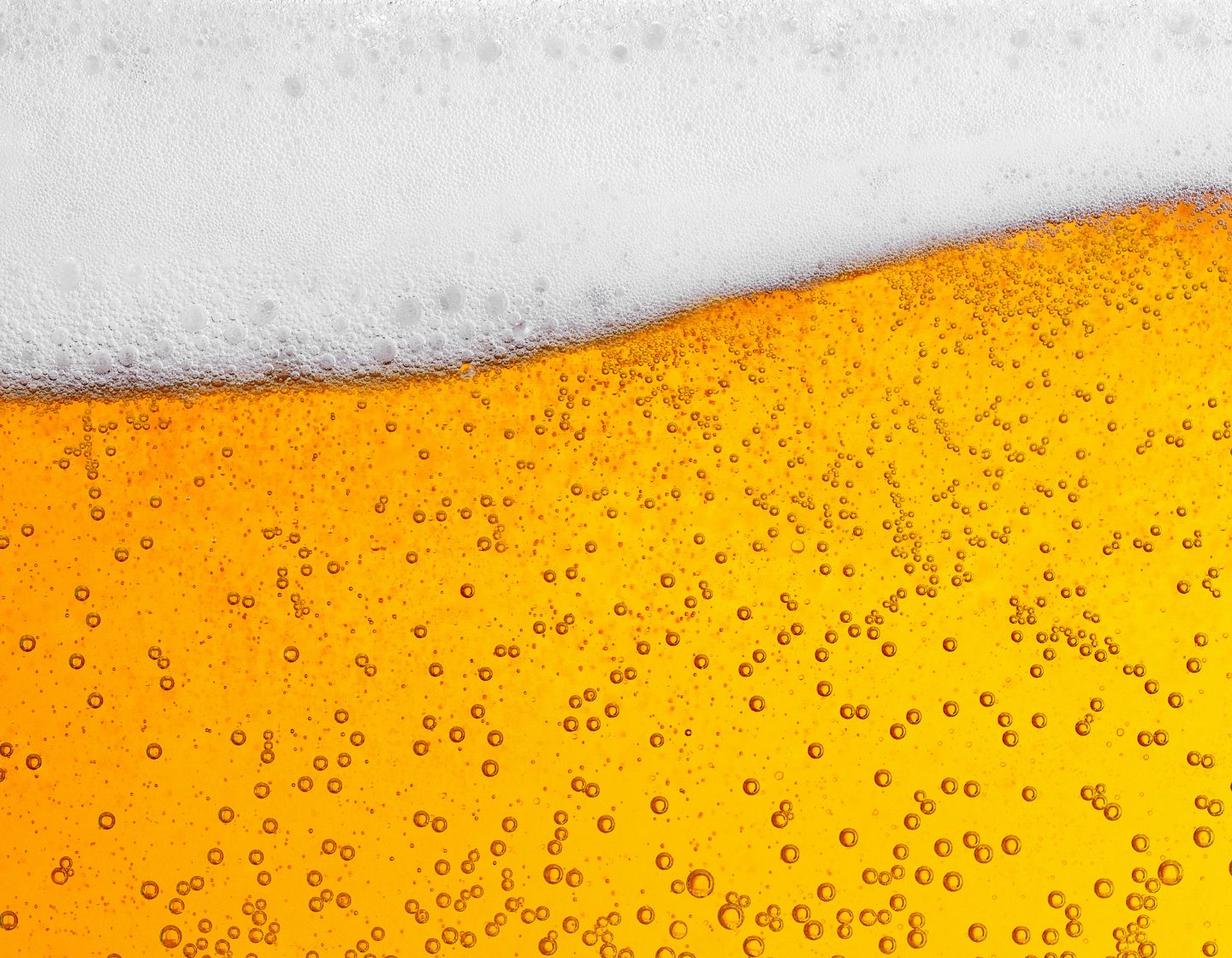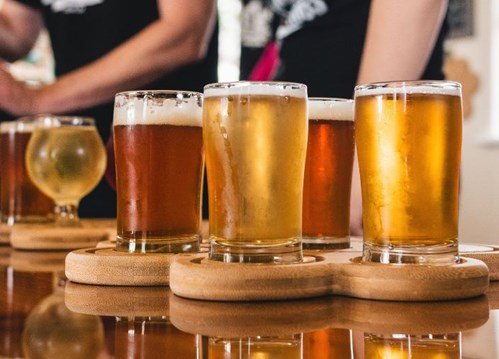
Beer 101: The Ultimate Guide To Beer
Discover the essentials of the beer category: the history, production method and types.
Estimated reading time: 7 minutes
EXPLORE THE RICH HISTORY OF BEER
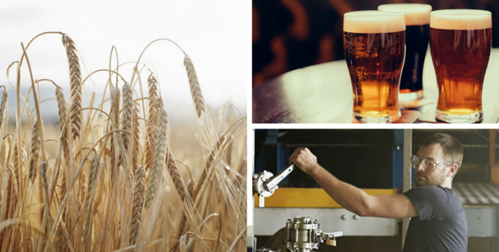
EXPLORE THE RICH HISTORY OF BEER
Beer has been a mainstay of humanity for thousands of years, and remarkably, the basics of how to brew beer have changed little in that time. Although there are hundreds of different beers from around the world, when it boils down to it, it’s all about that beautiful chemistry between grain, hops and water. Here in Africa, we also have a rich history of traditional beer-making that stretches back centuries. From Umqombothi in South Africa to Busaa beer in Kenya, us African people have always had a palate for the frothy maltiness of a finely made beer.
Throughout the centuries, beer-making was localised to communities and had to be consumed quickly upon making as it tended to spoil easily. However two breakthrough developments in beer production allowed for the mass production of the product and ensured that it could be transported over long distances - the invention of porters and stouts in the late 1700’s, dark beers brewed from brown malt and heavily hopped which ensured better longevity, and then the advent of pasteurised lagers in the early 20th century which again ensured that beer could last longer and be shipped en-masse. Today in Africa we have Guinness Foreign Extra as an example of a famous stout as well as many lager brands to choose from.
HOW BEER IS MADE
Beer is created from four ingredients: malted barley (or other grains), hops, water and yeast. The production process may vary across brands or styles, but these four components are consistent, as is the goal: to extract the sugars from the grains (typically, barley) so that the yeast can convert them to alcohol.
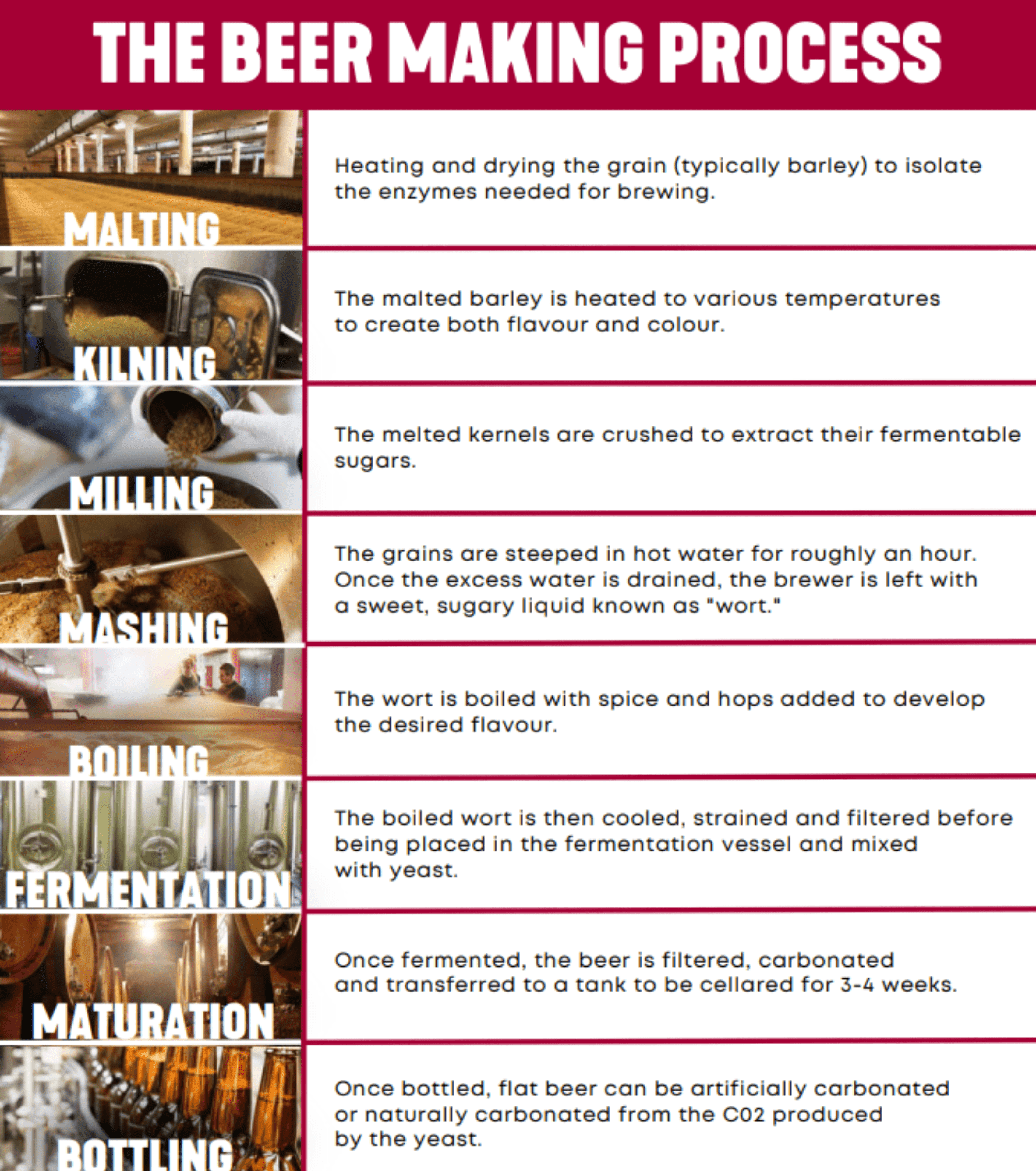
TYPES OF BEER
Lager – including pilsners, this is the world’s most popular type of beer. Originally hailing from Germany, lagers are generally stored at very cool temperatures for longer periods – instilling a smooth, crisp finish to the beer. Whilst colour and mouthfeel can vary immensely, the vast majority are pale yellow/ golden with high carbonation and a low to medium hop intensity.
Ale – championed by English breweries for many decades, these are generally more robust and complex, offering fruit, nut and malted notes. Brewed with top fermenting yeast at cellar temperature, ales are usually a brown or reddish hue and are full bodied and more flavourful than lagers. Pale Ale and IPAs are also in this category, relying on hops to give piney, fruity aromas and flavour.
Stout or Porter – famously perfected in Dublin by Guinness, stouts are dark in colour and typically rich and creamy in texture. Top fermentation and the use of unmalted, roasted barley deliver cereal and coffee notes and lend to its darker character.
Porter is slightly different, holding more fruit-forward characteristics; top fermentation is also used but a porter will normally have a lighter body and drier finish to a stout.
Lambic – this type of beer uses yeast that is naturally occurring in the air and they generally take much longer to make and can be quite sour in taste. Consistency is very tricky to achieve with blending commonplace and high amounts of hops often used due to their protective properties.
THREE CHEERS FOR BEERS
So that’s a quick download of beers from their origin, to how they’re made, to the different types of beers that exist. In Africa we have so many wonderful beer brands to choose from; from famous lagers like Tusker to classic stouts like Guinness, and we encourage you to keep learning the history behind them and how they’re made so that you can better appreciate them and pass on this knowledge to your customers.

